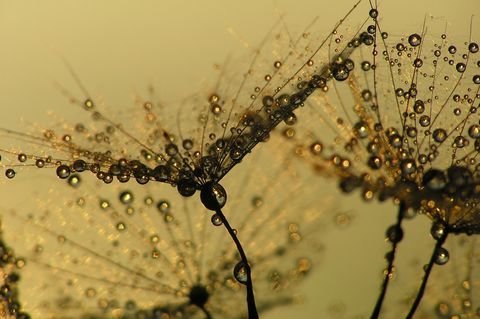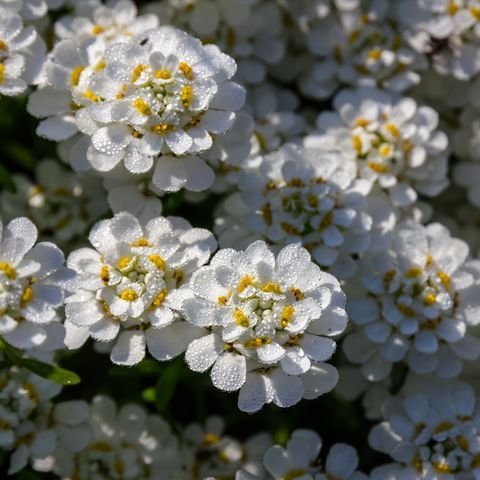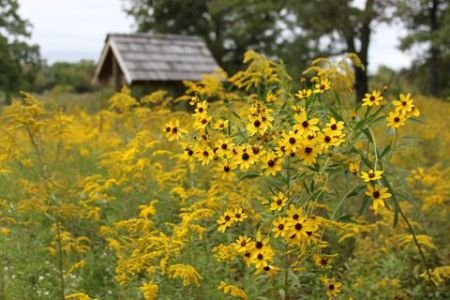Identify Weeds

This page breaks down the common traits
unanimously agreed on
to identify weeds.
Click for different weeds and their identification.
Features include:
- Sticks to clothes.
- Can be noxious.
- Can have toxic compounds causing irritations.
- Looks ratty. Giving no curbside appeal, reducing property value.
Better odds at succeeding in growing:
- When soil is exposed, weeds grow first.
- Widespread.
- Better ability to survive over other plants.
- Better at getting water, sunlight and soil nutrients where it can crowd out other plants.
- Less vulnerable to insects, diseases and various climate conditions.
- Better at multiplying than most cultivated plants.
- Spreads quickly, making control harder.
- Weed seeds germinate more easily over other sided plants like annual flowers.
- Can grow, even thrive in most soil types, especially poor quality soils lacking nutrients.
- Aggressive stolons - Above ground runners, as with Field Bindweed, where new plants can start.
- Aggressive Rhizomes - Underground creeping roots where new plants can start when it comes to weeds, rhizomes take over quickly.
Once Established creates unhealthy competition:
- Weed stems grow up faster crowding out wanted smaller annuals and perennial plants from needed sunlight.
- Aggressive rhizomes use up water, nutrients and oxygen where wanted vegetation can't get them.
Dirty Fighters:
- Allelopathy: Poisonous to plants.
Allelopathic plants release chemicals to other plants to kill them. This can be done from the roots or washed into soil from fallen leaves.
If there is a constant ring of exposed soil where nothing ever grows is a good indication that soil is a hostile environment for anything to grow. An example of this is Quackgrass.
- Poisonous to humans and animals.
Can create rashes, as with leaves of three weeds like Poison Ivy.
Poisonous to ingest such as weeds like Poison Hemlock and Pokeweed.
If cows ingest White Snake root (Eupatorium rugosum) the milk can kill anyone who drinks it.
- Cause unwanted reactions to pollen.
Pollens can cause hayfever and allergic reactions as with Ragweed and Bermuda Grass.
- Bad Hosts
Insects and disease that spread to other garden and lawn plants. For example, Pokeweed can host Cucumba Mosaic, a viral desease that can spread to cucumber crops.
Identifying weeds is pretty easy. Features that aren't always agreed upon by gardeners and professionals include:
Pretty flower on weeds
Edible parts of weeds
Medicinal values from weeds

Related Articles to Identify Weeds:
Weed Garden - Weeds that sometimes cross over into the wildflower category.
How to Kill Weeds - Herbicides, Natural weed control, home made weed killer and understanding pH of soil.
Dirty fighters include:
Quack Grass - Allelopathic weed
Back from Identify Weeds to home page Easy Butterfly Garden
 Copyright © 2010-2022 Easy-Butterfly-Garden.com
Copyright © 2010-2022 Easy-Butterfly-Garden.com
Privacy Policy Disclaimer

Join Easy Butterfly Garden on Facebook
Recent Articles
-
Annual Bluegrass
Jan 14, 17 08:14 PM
Annual bluegrass (Poa annua) is considered a weed in the Poa family, which has a few popular turf grasses. If this gets into your butterfly garden listed are a few ways to eradicate it.
-
Candytuft Flowers
Sep 25, 16 10:54 PM
There are the annual, or Iberis, candytuft flowers and also perennials which are called Iberis sempervirens.
-
Keeping Deer Out
Sep 19, 16 01:10 PM
Reviewing the types of products available for keeping deer out of our gardens along with building fences. Many of these products help with other garden pests.
-
Butterfly Meadows
Sep 19, 16 12:52 PM
Compared to other wildlife gardening, butterfly meadows take time and are not for the faint of heart.
-
Natural Gardening
Sep 19, 16 12:32 PM
Natural gardening includes different types of gardens. These garden types create a casual, natural envirionment and help sustain native wildlife which includes butterflies.






New! Comments
Have your say about what you just read! Leave me a comment in the box below.